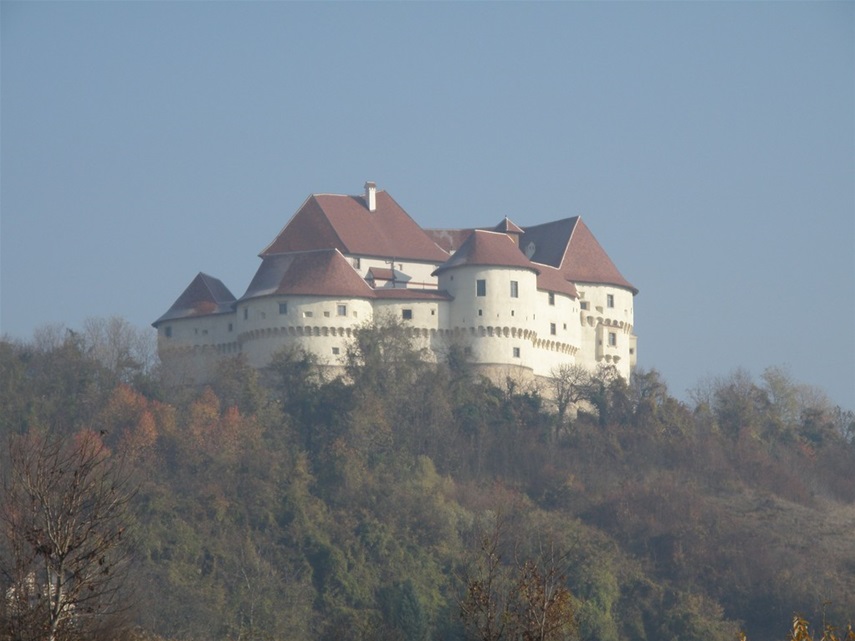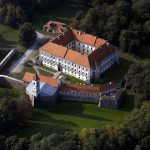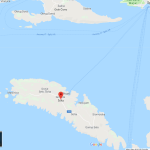Green hills, vineyards, spas and castles in a fairy tale landscape designed for rural retreats and casual road trips – that’s Hrvatsko Zagorje. Plus a few unique museums and loads of interesting history.
- Welcome!
- How to get to Zagorje and get around
- 5 things not to miss in Zagorje
- Where to stay?
- Where to eat?
- Top 6 ideas for how to spend a day in Zagorje
- 5 things you didn’t know about Zagorje
- Religious tourism
- Festivals in Zagorje
Welcome!
The historic region north of Zagreb, called Hrvatsko Zagorje (Croatian Zagorje) has all ingredients for enjoyable green holidays. Sightseeing options include castles, museums and historic sites; fun awaits in outdoor activities and water parks; rest and relaxation are guaranteed in spas, rural retreats and vineyards. And all of that and more in a spacious, tranquil, idyllic area, where the largest town has a population of 14,000.
How to get to Zagorje and get around
Plane
Zagorje gravitates to Zagreb, and this is also where the nearest major international airport is located. It takes about an hour or less to reach Zagorje from the Zagreb Airport, depending on your exact destination. The airport in Ljubljana is a two-hour ride away, and the airport in Graz is even less.
Road
Two major motorways pass through the region of Zagorje. The A2 Motorway (Zagorje Motorway) goes from Zagreb to Krapina and further to Slovenia. The A4 Motorway (Varaždin Motorway) goes from Zagreb through Varaždin and Međimurje to the Hungarian border, and further to Budapest. Zagorje is not a small region, and to get from one side to the other can be quite a journey, but all in all, the road network is good. And the scenery is lovely.
Regular bus lines connect all major towns with Zagreb, especially as many people commute. For this reason, check out the Main Bus Station in Zagreb for timetables. Even though Croatian trains are not the fastest and most reliable in the world, if you have the time and prefer a train ride, hop in. There are lines to Krapina and Varaždin, covering a number of smaller towns along the way. Check out the timetables here.
5 things not to miss in Zagorje
Hrvatsko Zagorje, as its full name goes, is not the largest Croatian region, but it is quite widespread. Obviously, with plenty of sites, things to visit and do scattered all over, good planning is essential. You simply can’t fit everything into one day. If you’re doing a day trip from Zagreb, make a smart itinerary. Or even better, reserve at least a couple of days to explore this attractive region.
Castles
There’s an impressive number of castles and manors in Zagorje, around 50 of them. Some date to the late medieval period, when they were built mostly for defence reasons, as there were constant invasion threats. A lot of them originate from the age of Baroque and later, as homes or retreat places for local aristocratic families. Unfortunately, just a few of them have undergone renovation and open their doors for visits. Overall, which are the two that you simply shouldn’t miss? Veliki Tabor and Trakošćan.
Veliki Tabor
This fascinating remnant of medieval times located on top of a hill dominates the area around the town of Desinić. It was built as a fortress in the 15th century but got reconstructed over the centuries. Veliki Tabor will fulfil all your fantasies about knights in shining armours and damsels in distress. Of course, there’s a famous legend attached to it. Not at all surprisingly, it involves the tragic and forbidden love between a poor peasant girl called Veronika and Frederick, the count’s son. Today, the castle it’s a living museum, partly also a gallery, as well as the home to Tabor Film Festival.
There are daily buses from Zagreb to Desinić (around an hour and a half), which is some 3 kilometers from the castle. Obviously, traveling by car is much more convenient. Furthermore, no day trip to Veliki Tabor is complete without having a hearty Zagorje lunch in the idyllic Grešna gorica, located directly across the castle.
Trakošćan
If Veliki Tabor is about knights, Trakošćan is about fulfilling all your Disney princess fantasies. Located in the far north of Zagorje, this neo-Gothic beauty dates back to the 13th century. Well-preserved and still looking like a postcard, Trakošćan is perched on a little hill and surrounded by a magnificent estate. It includes an English-style park and a lovely artificial lake.
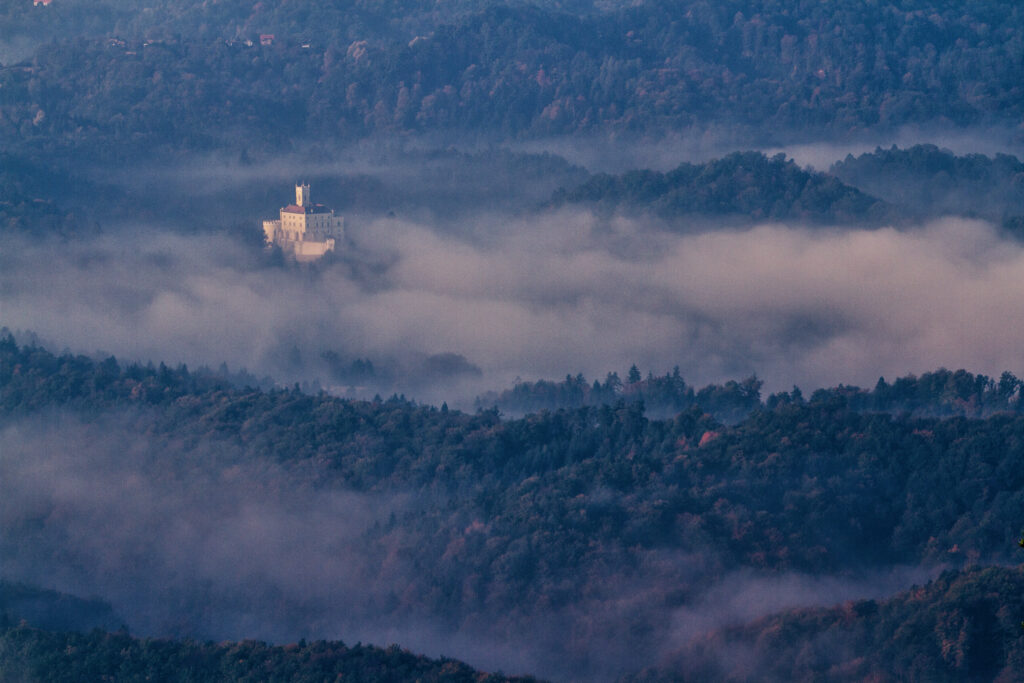
The castle itself is now a museum, displaying the life of the noble families that lived in it through different periods. Mind you, it’s also possible to rent the Trakošćan castle for parties or meetings (imagine having your wedding inside a proper castle!). While there is an admission fee for a tour of the castle, you can enjoy its beautiful grounds for free. Luckily, there is also a hotel close by, so spending the night is an option.
Any other castle?
Oršić Castle in Gornja Stubica has an interesting purpose. It was built in the 18th century in Baroque style as an elegant residence for the aristocratic Oršić family. These days, it houses a museum. Ironically, it’s the Peasants’ Revolt Museum, paying respect to the largest peasant uprising in Croatia, which took place in 1573. While telling the story of the peasant leader Matija Gubec and his unfortunate fate, the display also highlights the history of the region. Mihanović Mansion near Tuhelj Spa is now a restaurant and a very special venue for various events. Gjalski Castle near Zabok was once the home of Ksandor Šaver Gjalski, a famous Croatian writer from the late 19th century. Today it is a restaurant and hotel with a lot of history.

The attractive 17th century Bežanec Castle with beautiful surroundings is now privately owned and can be visited by appointment only. Part of it is an upscale hotel currently. The most instagrammable castle in Zagorje is surely Miljana, dating to the 16th century. It changed a number of owners throughout its history. Finally, at the turn of the 20th century, it was home to the charismatic chemist and politician Franjo Kajfež, who renovated it. Unfortunately, visits are not possible, due to further preservation and renovation works.
A rare non-historic castle?
In the midst of all these great historic buildings, there is something unique sticking out. If you drive down road 507, few kilometers before Krapinske toplice, all of a sudden a strange-looking castle will appear out of nowhere. With its 33 spiky turrets, bright colors and unusual design, it might remind you of a Lego castle. And you would be absolutely right, because that was the model. Empirej Castle was built some 20 years ago by a local businessman for his daughters. It is mostly an event venue, so you can rent it for your event or arrange a visit by appointment. For some, it’s an abomination, for others an interesting novelty, but it does add a certain flair to the sleepy Zagorje scenery.
The Krapina Neanderthal Museum
Hušnjakovo Hill near Krapina is a world-famous Neanderthal site. That is where the largest collection of the Neanderthal man was found way back in 1899. It was declared the first paleontological natural monument in Croatia, and attracted flocks of visitors. Since 2010 they have more reasons to come, because of the new state-of-the-art Krapina Neanderthal Museum. It’s a great family-friendly place to learn about evolution and the history of mankind, in a fun and interactive way. And on a location that couldn’t be more authentic.
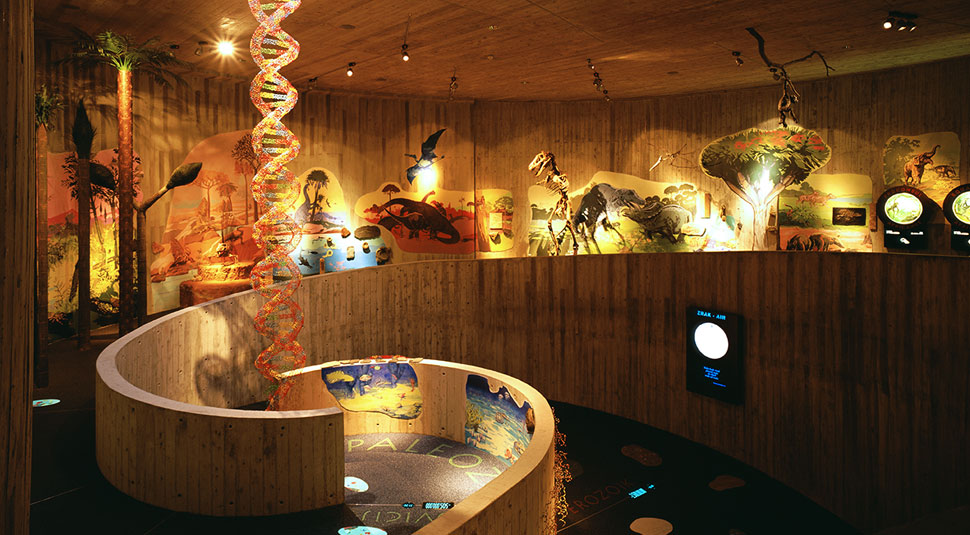
Vineyards of Zagorje
The connection of Zagorje people with their vineyards and wine is legendary. Everywhere you look there are small vineyard plots and little wooden houses for storing the wine, called klet. Yet, for a long time Zagorje wine had a really bad reputation and many considered it drinkable only when mixed with sparkling water. Oh, how the times have changed! There is now a dozen of family-owned boutique wineries with outstanding quality and international awards. And many more are coming.
Due to its geographic position and cooler climate, Zagorje soil prefers white grape varieties like Chardonnay, Pinot Blanc, Riesling, Graševina, Silvaner. However, there are also some quite successful experiments with red blends. The higher acidity in the grapes makes this area capable of producing really fine sparkling wines. Some old native varieties on the brink of extinction are being rediscovered. Don’t tell it to the French, but one of these old varieties, Belina, is a parent to more than 80 worldwide varieties, including Chardonnay.
Which Zagorje wineries to visit?
Spending a few hours at a wine tasting in one of the local wineries might be a very pleasant surprise and broaden your horizons. Among a few names to watch out for, both the hard-core biodynamic Bolfan and the all-around player Vuglec Breg have beautiful estates with lodging and restaurant. Petrač winery offers excellent wines and a breathtaking view; Kopjar has an impressive line-up and one of the best Sauvignon Blancs in Croatia; Zdolc is small and authentic, with some great value-for-money labels. Lovers of dessert wines and ice wines shouldn’t miss the opportunity to visit Bodren. This little cellar, producing only sweet wines, is probably the most awarded Croatian winery.
Land of thermal spas
It was probably the Ancient Romans who discovered that Zagorje is rich in natural thermal springs. And naturally, it resulted in thermal spas designed for rest and relaxation. Nowhere in Croatia are there that many spas concentrated in one area.
The most popular one is Terme Tuhelj, with a long tradition. There are numerous pools, both indoor and outdoor, and a big water park for kids. To boost your health, dip yourself into spring pools or try thermal mud. There are also several accommodation options, from camping to hotel.
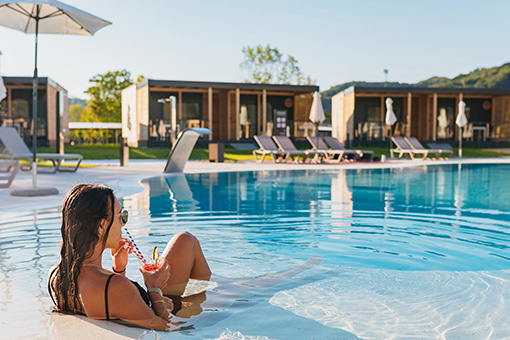
Stubičke Toplice is primarily known as a medical institution for rehabilitation, but also offer wellness facilities and accommodation for the general public. Jezerčica Spa in Donja Stubica is a relatively new facility, but already one of the favorite family destinations for city folks from Zagreb. The water park is not enormous, but everything is clean, comfortable and well-maintained. There’s also a wellness area, hotel, camp and restaurant attached. Behind the spa complex, you can take a walk in a unique park containing nine stone labyrinths, designed as a place of calm and contemplation.
Krapinske Toplice is another small town resort with centuries-old tradition of bathing in thermal waters. While there are several medical rehabilitation facilities, there’s also Aquae Vivae, a new complex of indoor and outdoor pools, with water attractions and a wellness center. Villa Magdalena Hotel is a bit more upscale facility, focused on tourism, with pools and a spa area. Its special feature is a hydro-massage bathtub with thermal water and a panoramic view in every room.
Kumrovec Staro Selo Museum
For anyone born during Yugoslavia, Kumrovec is synonymous with its leader and life-long president Josip Broz Tito. Tito was born there, and his old family house-turned-museum with the iconic bronze sculpture in front it still attracts many visitors. Yet, most of them come to go back in time and experience the idyllic countryside life from times long gone. The old village of Kumrovec has been preserved as an open-air ethnographic museum.
Kumrovec Staro Selo Museum features dozens of renovated old huts from the 19th century, each presenting a different stage in the village life, old customs and old crafts. In spring and summer, it can get quite lively on weekends, and there are often special exhibitions, workshops or demonstrations of crafts.
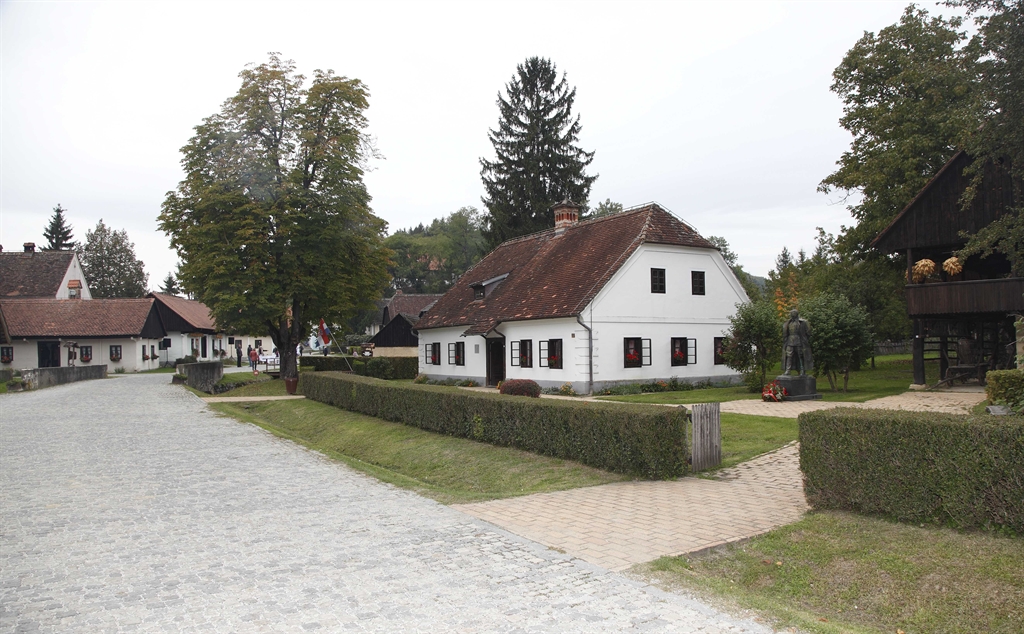
Where to stay in Zagorje
The endless green hills and valleys of Zagorje can accommodate visitors in any way possible. It’s all there, from camping and glamping to 4-star hotels and castles. Depending on your preferences and budget, it shouldn’t be a problem to plan an overnight stay. Or stays. Actually, we would highly recommend it, if you wish to explore more than a couple of sites. And in most cases, it is cheaper and more practical than staying in Zagreb and driving back and forth all the time.
Hotel Kaj in Marija Bistrica is a reliable place with good service and plenty of amenities. It includes a very good restaurant and a wellness & spa zone. As a rule, all spa resorts have more than solid hotels, like Villa Magdalena in Krapinske Toplice, Hotel Well in Tuheljske Toplice, or Terme Jezerčica Hotel. Some also have camping facilities and mobile houses. Sleeping in a castle is a luxury you can treat yourself with in Gjalski Castle or a bit more secluded Bežanec Castle.
(function(d, sc, u) {
var s = d.createElement(sc), p = d.getElementsByTagName(sc)[0];
s.type = ‘text/javascript’;
s.async = true;
s.src = u + ‘?v=’ + (+new Date());
p.parentNode.insertBefore(s,p);
})(document, ‘script’, ‘//aff.bstatic.com/static/affiliate_base/js/flexiproduct.js’);
For those who prefer something more rustic and private, Vuglec Breg estate on top of a hill might be nice. They rent several charming old wooden houses of different sizes, traditional from the outside, but full of modern comfort. An infinity pool overlooking the vineyards definitely sounds tempting.
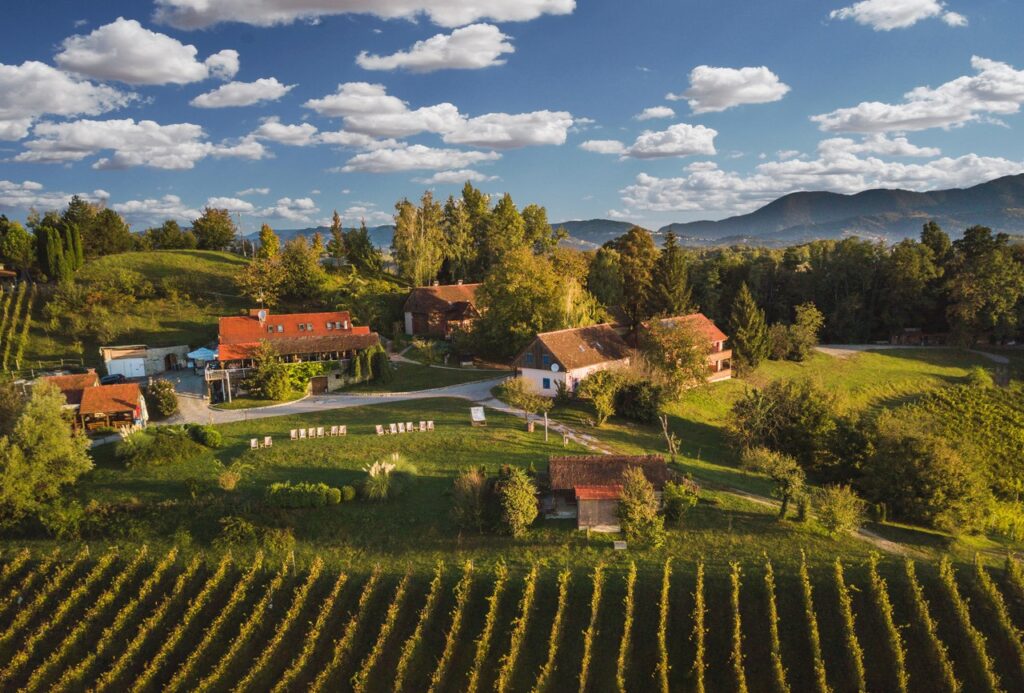
Agroturizam is the Croatian version of a farm stay B&B, and sounds just right in a rural region like Zagorje. Take a look at Masnec farm, Lojzekova hiža, or Zaboky Village, among others, and you’ll get the idea. There is a large selection of private apartments and houses to rent. For a bigger family or a group, a private villa with a pool surrounded by nature sounds tempting.
Where to eat in Zagorje
Hearty, flavorful and traditional would be three words that describe the cuisine of Zagorje well. The basis remains the old grandma-style countryside cooking with ingredients from local farms. Many dishes that we consider very typical for Zagreb actually stem from Zagorje, the city’s rural hinterland. A lot of fertile farmland, cattle, orchards and vineyards guarantees that the table is full all year round.
There are no modern experiments or hipster ventures here. Even the fanciest restaurants with Michelin or Gault&Millau recommendations rely on tradition. Hotel restaurants are the places where the tradition comes with a bit of creativity, in a classy setting. Magdalena restaurant in Villa Magdalena Hotel and Gourmet restaurant Academia in Hotel Kaj are fine examples that set a benchmark. Mihanović Mansion is another place that combines local flavors, good service and elegant ambience.
Traditional favorites
Vuglec Breg is usually full on weekends, which has a lot to do with their excellent homemade food and their wines from the estate. The eco-friendly Bolfan winery takes great pride in sourcing all ingredients from its immediate vicinity, and they are known for being creative when it comes to vegetarian dishes. The next category is picturesque eateries in the countryside, following farm-to-table philosophy and preparing honest dishes that everybody knows. Grešna gorica across Veliki Tabor castle is one of the pioneers in this niche. With its large outdoor space and a small petting zoo, it attracts a lot of family visitors. The charmingly bucolic Majsecov mlin, next to an old mill, has all the local favorites, same as the large and reliable Klet Kozjak.
Temple Bar in Stubičke Toplice is an urban eatery that combines popular international food like burgers, steaks and pasta with traditional dishes. The selection of drinks is impressive. Oro Goro is perhaps the most famous pizza place in Zagorje, delivering huge pizzas with a local touch since 1994. Ribič restaurant in Veliko Trgovišće has a cult following due to its signature larger-than-life, delicious Vienna steak.
What to try?
Fresh cottage cheese and cream as an appetizer is the beginning of everything, and also the filling for many local dishes. The iconic Zagorski štrukli, one of the most famous Croatian specialities, come in many variants. These soft pillows made of dough filled with a mixture of cottage cheese, cream and eggs can either be boiled, baked, served in a soup or turned into a dessert. Definitely the dish number one, available in all eateries that have anything to do with Zagorje. There’s a festival dedicated to štrukli – Štruklijada – changing places every year, uniting Zagorje on a plate.
The appetizer is not complete without a platter full of local sausages, salami, bacon, cheese, cornbread. Soup is an essential part of a meal. Chicken or beef broth with homemade noodles is the most common introduction, while the filing Zagorje soup can proudly stand on its own. It’s thick and rich, made with boletus mushrooms, cured meat, potatoes, root vegetables, white wine, and sour cream.
Roast duck or turkey with traditional mlinci pasta sheets is the most popular main dish, usually reserved for family lunches or special occasions. Pisanica Stubica is a unique microlocal pork dish with a long history. It’s sliced pork loin stuffed with plums, cooked in a sauce made from white wine, heavy cream, sour cream, and plum brandy, served with egg noodles. As in the rest of Croatia, all other kinds of meat are well represented on the menu, too. If anyone offers you bean salad with onions and pumpkin seed oil, served on the side, don’t say “no”!
Desserts are simple and delicious, based on seasonal local ingredients and grandma recipes. Strudels with fruit and pancakes are everywhere. Walnut or poppy seed rolls as well. Bučnica is a type of savoury strudel filled with grated squash and cottage cheese, topped with sour cream. Zlevanka is a modest, old-fashioned cake made with corn flour and cottage cheese, something like sweet cornbread.
Top 6 ideas for how to spend a day in Zagorje
Cycling in Zagorje
The nature of Zagorje is almost perfectly suited for this type of active vacation. Mild rolling hills, lots of forests, rivers and lakes invite you to discover them on your bike. The tourist infrastructure for that has been developed recently. Consequently, there are numerous well-marked and maintained cycling routes in Zagorje. Wouldn’t it be great to spend some time in Zagorje on a peaceful bike route, before jumping in a pool somewhere in one of the many spas of Zagorje?
Varaždin County has a website and an application to help visitors navigate the routes. Of course, the international bike route Drava Route goes through 4 countries and part of it is in Zagorje – find out more on their website.
From Kumrovec to Desinić
One day should be enough for a nice tour of western Zagorje. Have a scenic drive, visit a few of the local attractions and end the day with a filling traditional meal, maybe squeeze in a wine tasting.
Start the tour at Kumrovec village, a picturesque open-air ethnographic museum. Then head to Veliki Tabor, the impressive medieval castle near Desinić. Across the castle have a stop for lunch and relaxation at the popular Grešna gorica farm-to-table restaurant surrounded by nature. Zdolc winery in the hills above Pregrada is not that far, mind you.
Up and down around Stubica
The area around Gornja and Donja Stubica has a lot of options for sightseeing and family activities. You could start by having a swim in Terme Jezerčica, a cosy spa with amenities for all generations. Find more about local history at the Peasants’ Revolt Museum situated in a castle in Gornja Stubica.
Stop by the legendary Gubec Linden Tree, and have a gemišt and štrukli in the charming rural café right next to it. Majsecov mlin is a beautiful countryside restaurant with its own watermill, an ideal place to spend a lazy afternoon.
From Neanderthals to Medieval knights
The romantic old Trakošćan castle and Krapina Neanderthal Museum are probably the two most visited locations in Zagorje, so why not combine them. In Krapina, go back to the Paleolithic and learn about human evolution in a fun and interactive way. Then head to Trakošćan, about half an hour away. Save at least a couple of hours to enjoy the beautiful castle turned museum and the stunning park around it. Hotel Trakošćan with its a la card restaurant is the closest and more than solid dining option.
Winery hopping
Wine lovers should definitely take a chance to meet some of the regions finest wineries. Just above the medical spa town of Krapinske Toplice, Petrač winery sits on a hill with some amazing views. Their sparkling wine and red blends are not to be missed.
Just a bit further up north, you’ll find Vuglec breg, which functions as a winery, restaurant and guest house. Once you set your foot on this lovely estate, it’s hard to leave. Visit the cellar, have a glass of wine on a deck chair overlooking the vineyards, and treat yourself to a luscious Zagorje-style lunch or dinner.
Tranquility of western Zagorje
Even if you’re not a religious person, Marija Bistrica is worth a visit. The largest and most important Marian shrine in Croatia offers plenty of interesting sites. Apart from finding inner peace in prayer, you can also find it on attractive walking and biking trails around the town.
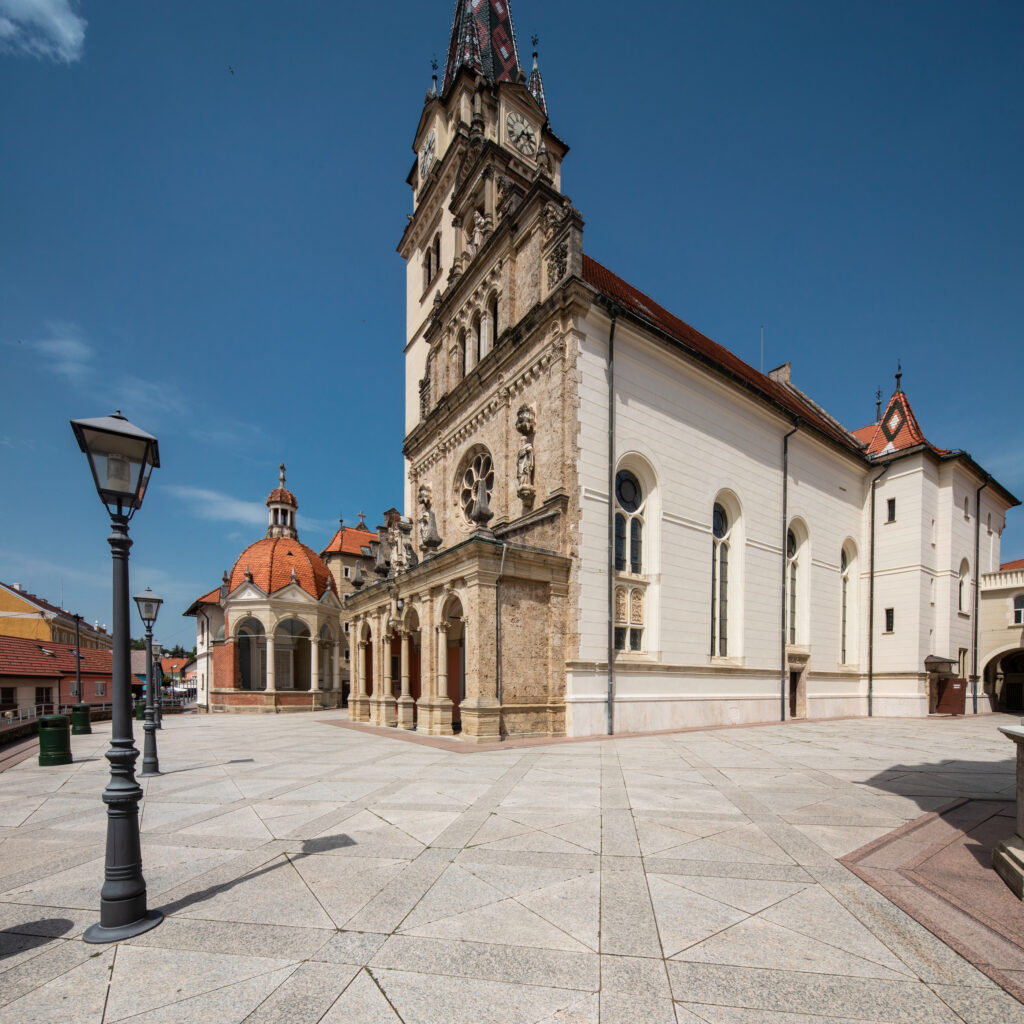
Explore regional heritage in one of craft shops dedicated to traditional wooden toys or licitar decorative honey dough hearts. Both crafts are on UNESCO’s Representative List of Intangible Cultural Heritage. Spend the afternoon in the green countryside, relaxing and tasting local specialties on a farm-to-table rural restaurant and winery like OPG Matoš. Or have a luxurious treatment in Bluesun Hotel Kaj’s wellness and spa center, followed by a gourmet dinner.
5 things you didn’t know about Zagorje
Two presidents
The humble region of Zagorje gave us two great local historical figures of the 20th century, two presidents. The first is Josip Broz Tito, today a controversial character for some. He was the leader of the Partisan resistance movement in the region in the Second World War. After the war, he became the communist leader of Yugoslavia, and he held that position until his death in 1980. His birth house with a small exhibition is located in the village of Kumrovec, now part of the ethnographic open-air museum. The second famous Zagorje president is Franjo Tuđman, the first president of the Republic of Croatia and its leader during the Homeland War. His birth house is in Veliko Trgovišće, renovated and open for visits.
Gupčeva lipa – Historic linden tree
Next to the church in Gornja Stubica stands a huge old linden tree. It’s definitely not just a tree, but a protected cultural monument and an important witness of history. Older than 400 years, it was alive during the Peasant Revolt of 1573. That’s why it bears the name of the peasant leader Matija Gubec. The legend says he and his fellow rebels would meet under the tree, but unfortunately, there’s no one else to confirm it.
Birthplace of the Croatian national anthem
On the road between Klanjec and Kumrovec you can spot a tall stone monument. It was erected in 1935, for the 100th anniversary of the day when Antun Mihanović published his poem Horvatska domovina. Later it was set to music and became the beloved Croatian national anthem Our Beautiful Homeland. The money to build and put it up came from crowdfunding, and it is said that over 20,000 people attended the unveiling.
Antun Augustinčić’s Gallery
Antun Augustinčić, one of the greatest Croatian sculptors of the 20th century, was born and buried in Klanjec. He donated the largest part of his works to his hometown, and in 1976 the Antun Augustinčić Gallery was built. He is the author of the Peace Monument in front of the United Nations building in New York. The sculpture of Tito in front of his house in Kumrovec, and the memorial to the 1573 Peasant Revolt and its leader Matija Gubec is also Augustinčić’s work.
Home of Lepoglava lace
The small town of Lepoglava, now better known as the home of the central Croatian penitentiary institution, was once the hub of the Pauline order in the region. Along with many good things they did for culture and education, they also introduced the art of lace making. This craft became a tradition that put Lepoglava on the world map, and has been kept alive for centuries. Lepoglava lace is a unique product, one of the most original souvenirs you can find in Zagorje.
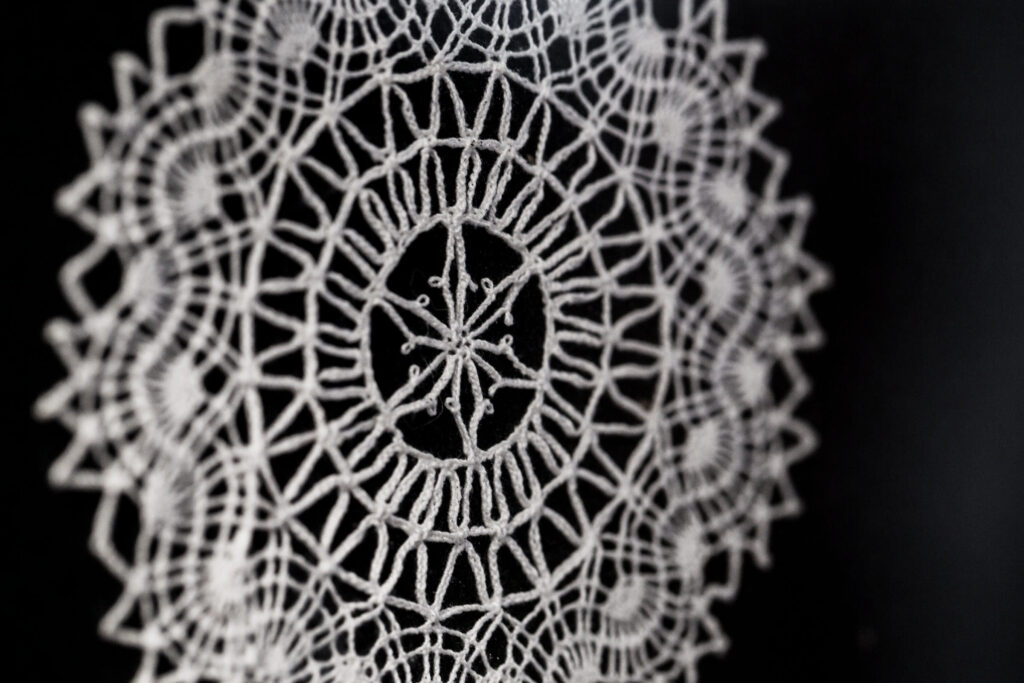
Religious tourism
Spirituality and travelling can certainly go together. The village of Marija Bistrica is the Croatian national Marian shrine and the most frequented pilgrim destination. The whole story goes back to the 15th century and a miraculous wooden statue of the Black Madonna. During the turbulent period of Turkish threats, a local priest buried it to protect it. For a while, no one knew where it was, until in 1588 a bright light shone from the choir of the church in Bistrica and the statue was discovered. Yet, another century of hiding and rediscovering went by. After its second finding in 1684, miraculous healing took place, and the word about the Saint Mary of Bistrica spread.
Nowadays, pilgrims and worshipers come in thousands every year. Pope John Paul II visited the shrine in 1998. Today’s Basilica of Our Lady of Bistrica was built in the 19th century, where the old church once stood. In 1880, during the construction, a fire destroyed everything except the main altar and the miraculous statue of the Mother of God. Around the church, other attractions include the Stations of the Cross to the Calvary, designed by Croatian sculptors, and a Park of Wooden Sculptures. Many hiking and cycling routes lead to Marija Bistrica.

There are numerous old churches and chapels scattered all over Zagorje, but St Mary of the Snows in a small hamlet of Belec is quite special. Built around 1675, it hides unique treasures inside, some of the finest examples of Baroque art in northern Croatia. The incredibly lush interior features five altars, a pulpit and a choir in gilded wood. Frescoes by Tyrolean painter Johann Baptist Ranger cover all surfaces, depicting the story of the Virgin Mary. Since the church opens for Masses only, a visit needs to be arranged by appointment.
Festivals in Zagorje
Every year there are plenty of traditional events and festivals to keep everyone entertained and involved. Naturally, most of them revolve around food, art and sports. It is interesting to note that both the beginning and the end of a calendar year are marked by two very important holidays for winemakers. St Vincent is celebrated at the end of January when the vines are blessed to yield a fruitful harvest. St Martin comes in early November, and that is when must turns into wine. Needless to say, both holidays are celebrated loudly and joyfully in many local wineries and restaurants.
Every September, Tjedan kajkavske kulture, or the Week of Kajkavian Culture, honors the local culture through a number of events. It all culminates with the Festival of Kajkavian Songs, established in 1966. Throughout the decades, famous singers from the whole country have put on a Zagorje folk costume and performed in the Kajkavian dialect. Since 2003, Tabor Film Festival features a selection of short films from all over the world. The venue couldn’t be better – the magnificent medieval Veliki Tabor castle.
If you like history, medieval extravaganza awaits at the annual reconstruction of the Battle of Stubica. Fought in February 1573 as the final battle in the great peasants’ revolt, today it gives the people of Zagorje a sense of pride and lots of fun. Eko, Etno, Fletno Festival in Kumrovec celebrates Zagorje heritage, tradition and customs, with plenty of food, drinks, music and entertainment bursting with local flavours. Among festivals dedicated to Zagorje specialities, Bučnica Fest focuses on the beloved summer strudel made with squash and cottage cheese.
More information
For more information, check out the websites of the Tourist Boards of Krapina-Zagorje County and Varaždin County.

